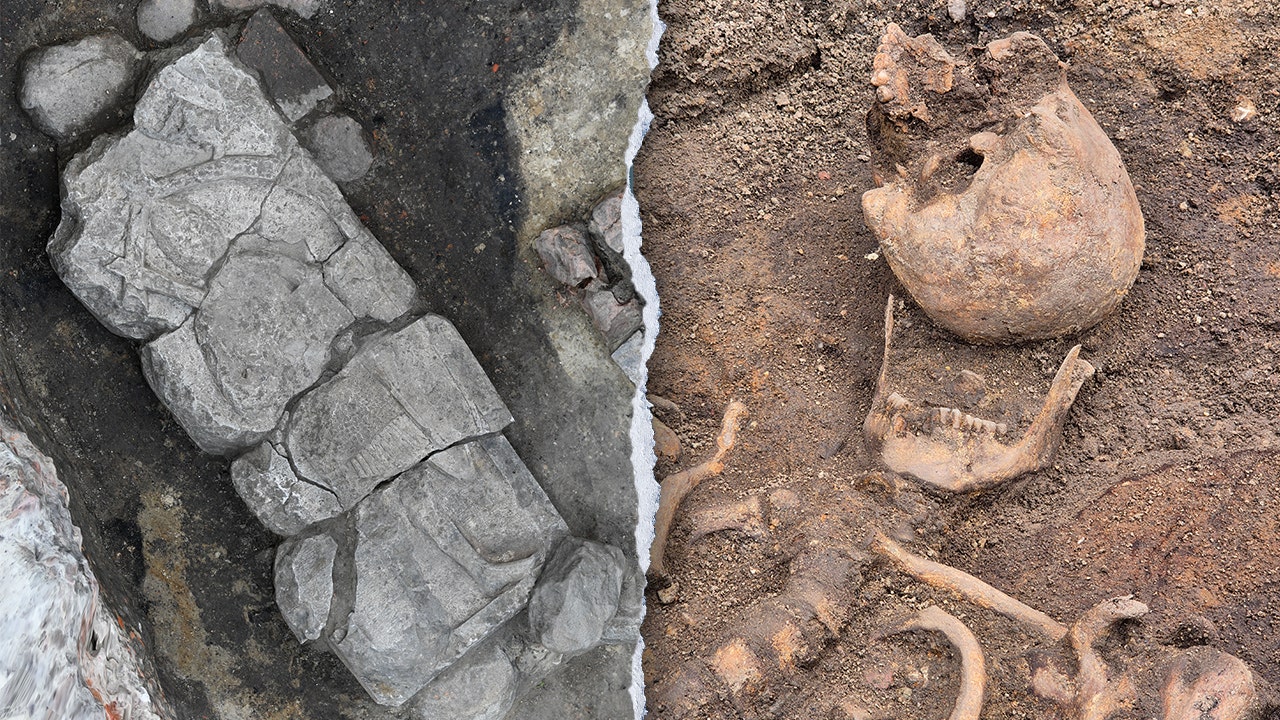A Remarkable Discovery Beneath a Historic City
In the heart of a vibrant tourist city, Polish archaeologists have made an extraordinary find—an elite knight’s burial site that has remained remarkably intact. This discovery was made in Gdańsk, Poland, a city known for its rich history, colorful architecture, and scenic location along the Motława River. The tomb was uncovered beneath the former site of Lodziarnia Miś, a beloved ice cream parlor that once stood at the intersection of Sukiennicza and Grodzka streets.
The area where the tomb was found was once a 13th-century cemetery adjacent to the remains of Gdańsk’s oldest known church. This church, built from oak wood cut down in 1140, is currently recognized as the oldest wooden church ever identified in Poland. The site is located in the city’s historic center, Śródmieście, and served as a key place of power, faith, and burial during medieval times.
A Rare and Well-Preserved Tombstone
The tombstone, dating back to the late 13th or 14th century, was part of an early medieval stronghold within the city. It was crafted from limestone imported from the Swedish island of Gotland, indicating the high status of the individual buried there. The carvings on the tombstone were skillfully done, suggesting it was created by a highly skilled artisan.
Images of the discovery reveal the faint image of a male figure standing upright, wearing full chainmail armor and leggings. He holds a sword and shield, with details of his armor and weapons still visible despite some damage. The head and left foot are also clearly discernible.
The tombstone is surprisingly well-preserved, especially considering it was made from soft limestone and buried for centuries. This rarity makes the discovery even more significant, as such tombstones were typically reserved for important individuals. However, there is no evidence linking the figure to the Teutonic Order, and no inscriptions confirm this connection.
Uncovering the Knight’s Legacy
During the excavation, archaeologists carefully lifted the tomb slab and uncovered the knight’s complete skeleton. Initial examination revealed that the warrior stood between 5’5″ and 5’9″, which was above average for the time. The bones were found in anatomical alignment, confirming the tombstone marked the actual burial site. While the skeleton is well-preserved, no grave goods were found in association with the body.
Experts hope to conduct additional research, including genetic analyses to determine the knight’s age at death and his health history. Further isotopic analysis may shed light on his lifestyle, diet, and any possible links to other burials. Archaeologists also plan to conduct a facial reconstruction to better understand the appearance of the knight.
Significance of the Find
ArcheoScan emphasized that this discovery is one of the most important archaeological finds in Poland in recent years. It provides valuable insights into burial customs and medieval symbolism. Figural tombstones showing full-length armored figures are rare in Poland, especially from the 13th–14th centuries. Together, the tombstone, the church, and the cemetery help tell a rich and layered story of early medieval Gdańsk.
This remarkable find not only adds to our understanding of the past but also highlights the hidden history that lies beneath modern cities. As researchers continue their work, they may uncover even more about the life and legacy of this elite knight and the people who lived in medieval Gdańsk.



